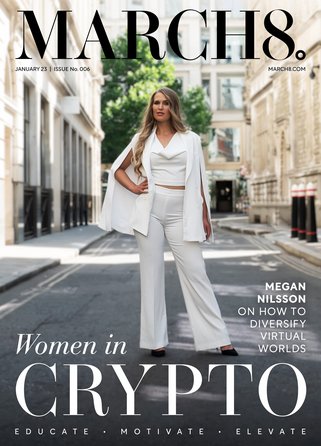How to spot, tackle and eliminate unconscious bias

It’s no secret that some people face greater obstacles in both life and in the workplace. From sexism to racism to ableism, unconscious bias comes in all manner of shapes and sizes, often impacting individuals at every turn of their career. But we wanted to gain a deeper understanding of what unconscious bias really is, as well as how to tackle, spot and eliminate behaviours.
What is unconscious bias?
In order to understand unconscious bias, we need to look to our own beliefs and attitudes. “Most of us would never describe ourselves as racist, yet our implicit attitudes are often directly at odds with our consciously-held beliefs,” Binna Kandola, Business Psychologist, Senior Partner and Co-Founder of Pearn Kandola explains. “We might not like to believe it, but the moment we set eyes on someone, we begin to form an impression of them that is based on the colour of their skin, their gender and even their name. This is unconscious bias.”
Here, we highlight the various ways in which we can identify and eliminate these behaviours.
Understand that everyone has unconscious bias
Although we may not like to admit it, each and every one of us has unconscious biases shaped by the world around us. If you want to gain a deeper understanding of your unconscious biases, you can take a variety of online tests designed by Harvard University.
Binna explains that these biases accumulate over time, whether we’re aware of their impact or not. “We acquire stereotypes throughout our lives: from the people around us, the media, interactions with others and our personal experiences,” Binna says. “While we can consciously explore the impact and meaning of these influences, it’s naïve to think we have somehow inoculated ourselves against their power. We seem to be telling ourselves that, because we no longer consciously indulge racist or sexist attitudes, they have disappeared. In reality, at a deeper, unconscious level, bias continues to shape our world.”
Unconscious bias training isn’t enough
Of course, completing unconscious bias training is a great place to start, but it’s definitely not a one-stop solution. As our brains have learnt bias over time, we actively and continuously have to challenge ourselves, colleagues and those in leadership positions.
“To create truly inclusive workplaces, discussions around race and gender at work need to happen continually, which means listening to the experiences of employees and implementing actionable solutions,” Binna says. “As part of this, leaders need to take accountability, fostering inclusive behaviours, setting an example when it comes to challenging stereotypical attitudes, and being open to being challenged. It also requires having effective policies and procedures in place, for example on recruitment, selection and promotion.”
Unconscious bias starts with recruitment
Unconscious bias doesn’t just come in the form of snide comments and glass ceilings – it quite often begins before an individual has even accepted a role at a company and follows them at every turn of their career path.
“It’s important for workplaces to address unconscious bias, because it affects every stage of the employee life cycle – so much so that even before an employee has joined a business, they are likely to fall victim to bias in the recruitment process,” Binna says. “Further down the employee life cycle, bias goes on to impact factors such as promotion, partly because managers are likely to evaluate someone who is similar to them more favourably.
“In an interview scenario, for example, recruiters can be trained to ask candidates questions that help them provide as detailed responses as possible. Vague or ambiguous answers leave the door open for bias to fill in the missing details with assumptions that are based on stereotypes. Therefore, encouraging recruiters to be as factual and objective as possible in their approach will help to reduce the opportunity for bias to creep into their work.”
Speaking up and holding others accountable
When it comes to breaking unconscious bias, there’s well and truly power in numbers. It’s therefore vital to call out behaviours that showcase unconscious bias to hold others accountable and demand change.
“Breaking these biases is crucial, as when bias begins to inform our decisions, fairness becomes jeopardised,” Binna says. “In the case of gender bias, this can lead to women receiving less critical performance feedback, fewer career-enhancing opportunities and unequal pay for the same roles as men.”
Employers need to therefore create safe and inclusive environments where employees feel they are supported when raising issues, while enforcing a zero-tolerance approach to discrimination.
“To reduce bias, we first need to challenge it. This requires a willingness to engage with it, to own it and to be open to new ways of examining our behaviour, thoughts and feelings,” Binna adds.
Constantly shift your paradigm
Unconscious bias isn’t just something that you ‘learn’ to stop – in fact, it requires you to constantly ask yourself, and sometimes others, uncomfortable questions to ensure every decision is made on a fair and equitable basis.
“It’s possible to change our biases once we are aware of them, but that doesn’t mean that simply making people aware of their biases will empower them to manage them,” Binna says. “The reality is that unconscious biases affect most of our everyday decision making, and that what you are trying to achieve is a form of behaviour change – fairer judgements, fairer evaluations and fairer decisions. To achieve that, we have to give people knowledge and tools that actively reduce opportunities for bias.”
Featured Articles
B Corporation certification has long been hailed as the gold standard of sustainability – we explore why
How does a retail investor replicate, as closely as possible, a venture capital investment strategy? Paula Tavangar of SwissBorg Ventures explores
Michelle Li shares how parents can ensure their children are taking the right steps to a more sustainable future



